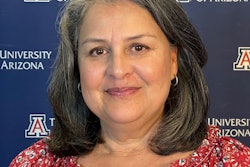WASHINGTON – Hispanic students are the fastest growing population in U.S. public school systems, representing one in five students in grades K-12 and one in four in kindergarten. Yet they also have a drop-out rate that is close to 50 percent. How to reverse that statistic and help these students enter and graduate from college was the theme of a two-day National Summit and Call to Action hosted by the White House Initiative on Educational Excellence for Hispanics. Education leaders gathered in Washington on Monday and Tuesday to share best practices and strategize about ways to increase education access for Hispanic-Americans and help reach President Barack Obama’s goal to significantly increase college graduation rates by 2020. Obama will sign an executive order on Tuesday aimed at helping raise Hispanic academic achievement.
The summit is a follow-up of visits that Juan Sepulveda, executive director of the White House Initiative, made to more than 90 communities in 20 states seeking ideas and information about how to improve education achievement levels for Hispanics. More than 15 government officials from the Department of Education, Housing and Urban Development and Health and Human Services attended the event.
There was broad consensus that such an effort must begin a lot earlier. Several participants shared their concerns that not enough is being done to engage parents, even those with limited English-speaking skills, in their children’s education.
Maria Acevedo, president of Communicart, said there are not enough inspiring images of Hispanics and Latinos serving in professions like science and medicine that would encourage them to see higher education as a viable option.
“So often kids are exposed to images of where we don’t want them to go — don’t do drugs, don’t get pregnant, don’t join a gang—rather than were we do want them to go in terms of becoming an engineer or a doctor, so it’s very hard for them if they’ve never seen that,” she said.
Dr. Eduardo Ochoa, an assistant secretary in the Department of Education’s Office of Postsecondary Education, cited several programs worth more than $2 billion aimed at supporting Hispanic and other ethnic minority and underserved communities, many of them focusing on the STEM fields. But he also expressed concern about the budget cuts many states are facing and said more must be done to arrest cutbacks that threaten to reduce the capacity of state universities and community colleges.
Chris Cox, representing the Texas High School Project, presented a unique challenge in which students earn dual credits so that by the time they enter their senior year in high school, they’re prepared to begin their junior year at a four-year institution. But because they haven’t graduated yet, they have problems getting financial aid. It’s a challenge that Ochoa is happy to take on and said he would explore ways around it.
One of the summit’s moderators challenged attendees to take advantage of the many grant opportunities available from the federal government as a way to work around some of the budget cuts their communities are facing.
“We know that many of your institutions haven’t done that for various reasons but as leaders the charge you have is to go to your community college and other institutions serving our students and ask if they’re applying to these grant programs,” he said. “If they’re not, ask why not and if they are, find out how they’re benefitting with real numbers.” If the leaders don’t do that, he said, they’re not doing their jobs, and warned that they’ll be discussing the same issues in 2020 and will not have made much progress.
Hispanic Scholarship Fund President Frank Alvarez said the summit was the perfect way to respond to the feedback that Sepulveda got during his listening tour around the country. He said that the White House Initiative on Educational Excellence for Hispanics is now a lot more responsive.
“The times are different now and the U.S. understands that Hispanics can be an anchor or a catalyst for the country, so there’s an effort to put some steam behind that,” he said. “My hope is that there will be more listening than talking at the summit. It’s clear we’re going to get much better returns if we work together, not just for the Latino community, but across all communities.”
Alvarez also said he’d like to see various organizations and higher education institutions begin to line up their programs around the common theme of collaboration.
“My hope is that the call to action results in people starting to line up their programs around a common theme instead of trying to convince others to follow theirs,” he said.















